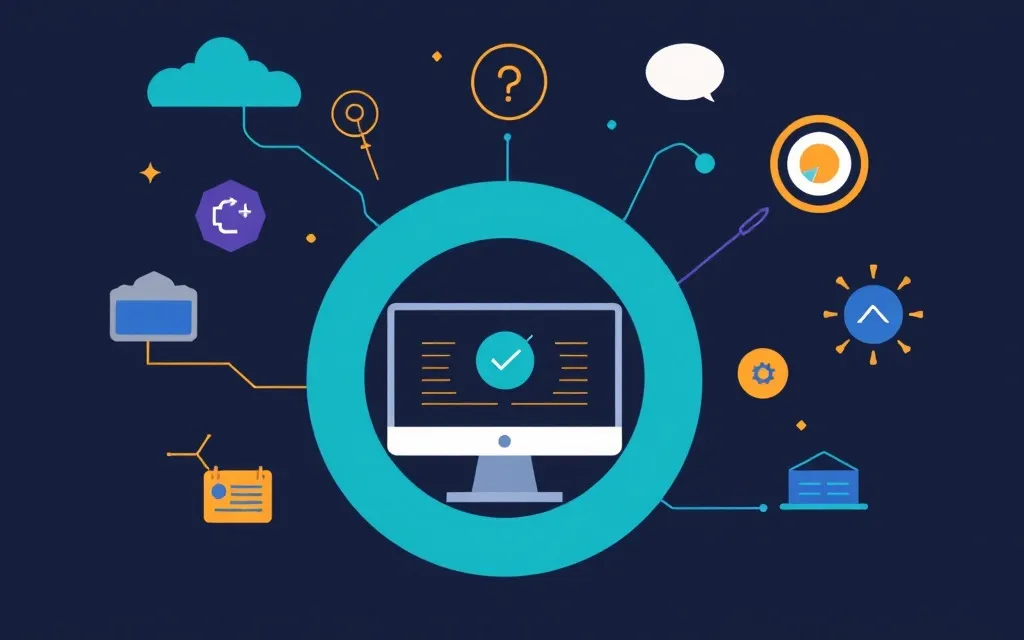
Discover the Best Observability Tools for 2024: Your Ultimate Guide
In today's fast-paced IT world, observability tools have become essential allies for developers and IT administrators. These tools are critical for enhancing application delivery, performance, customer experience, and troubleshooting. As we approach 2024, the need for powerful observability solutions is growing, driven by the complexities of microservices architecture and distributed environments. This ultimate guide delves into the top observability tools for 2024, highlighting their features, capabilities, and the future of observability technology.
What is Observability? A Deeper Insight
Observability tools serve as a centralized hub for collecting and visualizing telemetric data, providing deeper insights than traditional monitoring systems. They gather three types of telemetry data: metrics, logs, and traces, which form the core of observability. These tools enable organizations to optimize performance, ensure availability, and improve customer experience through real-time insights and AI-driven analysis.
Leading Observability Platforms for 2024
1. Datadog: The Versatile Powerhouse
Datadog stands out for its rapid development of new capabilities, supporting over 450 integrations. It excels in handling complex technology stacks with automated log anomaly detection and machine learning for performance analysis. Datadog's comprehensive solutions position it as a leader in the observability market.
2. Dynatrace: The Enterprise Favorite
Dynatrace, favored by large enterprises, focuses on cloud and hybrid environments. With plans to launch AI Observability, it enhances its already robust platform. Known for its comprehensive solutions, Dynatrace is considered the top overall observability tool for 2024.
3. Grafana Cloud: The Visualization Expert
Grafana is celebrated for its visualization capabilities and broad global hosting footprint. It excels in observability cost management, although it requires integration with other tools for data collection.
4. New Relic: The Flexible Contender
New Relic offers flexible licensing models and is praised for its accessible and transparent pricing. It provides real-time metrics and AI features for error analysis and anomaly detection, making it a strong contender in the observability space.
5. Splunk: The Large-Scale Leader
Splunk supports OpenTelemetry and is best suited for large-scale deployments. Despite facing integration challenges post-Cisco acquisition, it remains a leader in the market due to its robust capabilities.
6. Cisco AppDynamics: The Performance Monitor
AppDynamics offers full-stack observability and uses AI for performance insights. It is the best choice for application performance monitoring, providing real-time insights and support for various platforms and integrations.
7. SolarWinds Observability: The Security Sentinel
SolarWinds excels in providing complete IT infrastructure visibility and rapid security incident response. It is a top choice for organizations seeking comprehensive observability solutions.
Making the Right Choice: Observability Tools Comparison
When selecting an observability tool, consider ease of deployment, support, scalability, integration capabilities, real-time visibility, and pricing. Open-source options like Grafana, Nagios, Prometheus, and Zabbix offer cost-effectiveness and customizability but may present complexity and support challenges. Commercial tools like Datadog, Dynatrace, AppDynamics, and New Relic are industry standards, offering robust features and support.
The Future of Observability: Trends and Innovations
The observability market is competitive and diverse, with significant open-source components. As AI's role in IT operations grows, observability tools are expected to integrate more AI-driven features. Market trends indicate a rising need for multi-source telemetry analysis and enhanced cybersecurity support. Mergers, acquisitions, and product consolidation will likely continue to reshape the market landscape.
Crafting Your Observability Strategy
Choosing the right observability tool is crucial for optimizing application delivery and achieving business goals. As we move into 2024, organizations must assess their specific needs and select tools that align with their operational requirements. With the right observability strategy, businesses can enhance performance, ensure availability, and deliver exceptional customer experiences.
In conclusion, the observability landscape in 2024 offers a wealth of options, each with unique features and capabilities. By understanding the strengths and limitations of each tool, organizations can make informed decisions that drive success in their IT operations. Share your thoughts on these tools or suggest your favorites in the comments below. Explore further to stay ahead in the evolving observability landscape.

